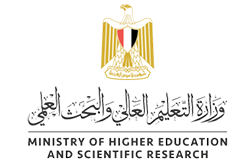



This document has the appearance of a paper written in accordance with the requirements. All authors are
expected to closely follow these guidelines. The manuscripts may not exceed a total of 10 (ten) pages.
It is expected that your paper reflects on novel approaches, developments, enhancements and results of
research and application.
The abstract body should include an
introduction, purpose of the study, experimental procedure, results, and a conclusion.
Each paper should have the following structure and order. Title of the Paper: It should be written in capitals; UPPERCASE (Times New Roman 14 pt, boldface) centered on one or more lines. Names of the Authors: Leaving two blank lines after the title of the paper, the names of the authors are written (Times New Roman 12 pt, boldface) centered on a line, last names in capitals, separated by commas.
It is written following a blank line after the names of the authors including city and country, centered on a line (Times New Roman 12 pt).
A short description of the study in approximately 300 words (Times New Roman 12 pt) is given following the affiliation and leaving two blank lines.
Keywords related with the study must be given in minimum number (maximum six words) and separated by commas (Times New Roman 12 pt).
The general writing rules are given in Section 2.
If applicable, the name of the supporting institution or person may be cited. Type the word "Acknowledgment" as a sub-heading (without any section number) followed by the text.
Literature references should be listed at the end of the paper in the same order in which they appear in the text and in accordance with the examples given at the end of this instruction (Times New Roman 12 pt). Type the word "REFERENCES" as the major heading (without any section number). The reference numbers in the text should be given in brackets [ ].
All additional information not included in the main text is given under this heading. Type the word "APPENDIX" as the major heading (without any section number) followed by the text.
The manuscripts are preferably be written with MSTMWord-2010 or higher versions in accordance with the Margins (all margins are 2.5 cm), in single spacing with character size of 12. All figures and tables should be mentioned in numerical order in the text. Please DON’T insert page numbers and DON’T write anything in the Headers and Footers part of the pages. Final MS™word.doc should be converted to Acrobat™.pdf document. If any damage occurs in the MS™word.doc document, Acrobat™.pdf document will be evaluated as the "original document" for correction. Please use your Abstract number as the Document name (e.g. msmtegypt2025.docx and msmtegypt2025.pdf). The manuscript, both MS™Word.doc and Acrobat™.pdf document types, is to be submitted through the conference website (www.msmtegypt2025.org) or sent by e-mail (info@msmtegypt2025.org) to Chairman of the Conference Scientific Committee (Prof. ????).
All paragraphs should be flushed left to the margin. A blank line (12 pt) should be placed between the successive paragraphs.
The text must be single spaced.
There are three types of headings:
headings such as ABSTRACT, INTRODUCTION, and REFERENCES should be written in capitals (Times New Roman 12 pt, bold-face). A 12 pt blank line separates a major heading with the previous paragraph, and a 12 pt blank line with the next.
Should be typed with first letter of each word in capitals (Times New Roman 12 pt, bold-face) and numbered. A 12 pt blank line separates a sub-heading with the previous paragraph, and a 12 pt blank line with the next.
First letter only of a secondary sub-heading should be typed with capital letter (Times New Roman 12 pt, bold-face). The Secondary sub-headings should be numbered
The title of the table should be typed above the table. (Please leave a 6 pt space between Table Title and Table).
Each figure, illustration and photograph must have caption typed directly beneath it, such as
Figure 1 Macrograph of welded joint. (Please leave a 6 point space between Figure and Figure
Title)
All figures, drawings, graphs and photos should be impeded in the text and have enough
resolution (min. 300 dpi) to be easily followed by the reader. Color photos and drawings are also
acceptable and they will appear in the conference flash memory with their original colors. However,
authors should note that some color information may be lost during grey scale printing from conference
flash memory.
All equations are centered on a line with preceding and succeeding blank lines to separate
them from the text and numbered. The equation numbers appear at the right-hand-side of each equation
(near right margin) written in parentheses ( ), e.g.
D = D0 exp(-Q/RT) (1)
The footnotes are referred with superscripts1 and the corresponding footnote must be inserted at the bottom of the same page in which its reference appears, separated from the main text with a horizontal line.
You can give the results of your work under the title of "RESULTS" or "RESULTS AND DISCUSSION". As it was mentioned in the first page of this guide, recommended length for the manuscript is 10 pages for both oral and poster presentations. However, please note that there is no page restriction for the Honorary/Keynote speakers.
The examples for references are given below:
[1] K. Maweja and W. Stumpf, “Fracture and ballistic-induced phase transformation in
tempered martensitic low-carbon armour steels”, Materials Science and
Engineering A, 432 (2006), 158–169.
[2] T. Altan, S. I. Oh, H. L. Gegel, "Metal Forming Fundamentals and Applications", American Society for
Metals, Metals Park, Ohio 1993.
[3] B. Tarad and A. Omar, “A study on friction stir welding of AA6061 Al alloy,
1st International Joint Symposium on Joining and Welding-IJS-JW, 6-8 November
2013, Osaka, Japan.
[4] Pritchard Marozva, "Laser Beam Welding of High Strength Steel", M.Sc. Thesis, Pan Africa University,
Kenya 2022.